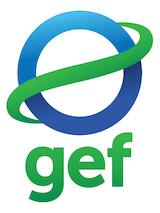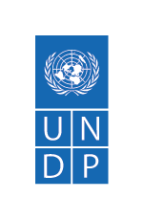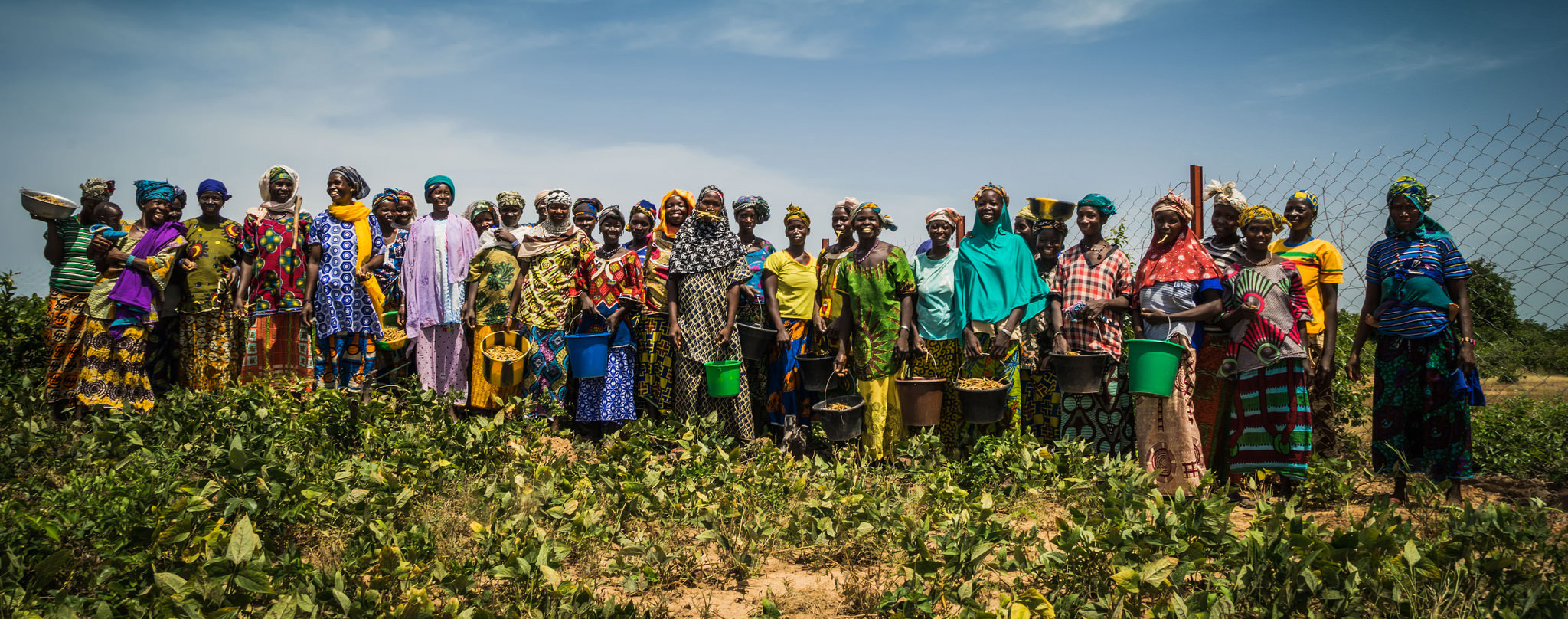Flood Hazard and Climate Risk Management to Secure Lives and Assets in Mali
Flooding and other climate change risks have a severe impact on the people of Mali. Significant flooding events over the past 30 years have impacted over 3 million people, taking lives, destroying infrastructure, causing serious economic losses, and derailing efforts to build more resilient lives and livelihoods.
The "Flood Hazard and Climate Risk Management to Secure Lives and Assets in Mali" project will develop adaptation benefits that minimize the exposure of vulnerable populations to floods and flash flood risks, and thereby minimize losses of assets that will accelerate with the expected impacts of climate change. The project is seeking to develop long-term sustainable approaches by mainstreaming climate risk management into local development plans. By building sustainable land and water management techniques and riverbank protections, the project will help to maintain and restore biodiversity by strengthening the functionality of the ecosystems. Local government recognizes the significance of flood risk and the need to integrate flood risk assessment and its management into the planning process in order to deliver a policy to avoid and minimize potential future flood risk.
The project will take into account how resource degradation and natural disasters, such as flooding, affects men, women and vulnerable groups, such as children and the elderly, differently. The dissemination and sharing of information will be developed and disseminated in order to ensure that women and girls - especially those who are poor or who were denied the right to education - can easily have access to the necessary information.
At the national level, the project will build the overall capacity of the Government of Mali to plan for and respond to floods. At the local level, the project will deliver targeted adaptation benefits to 51 vulnerable local communities in the districts of Bamako, Kayes and Mopti, resulting in direct benefits for at least 1.2 million people in 120,000 households. Within these target intervention sites, the project will introduce multiple measures to reduce vulnerability to flood risks. Vulnerable local communities will benefit directly from the establishment of physical measures for flood protection including permeable rock dams and stormwater drains. In addition to providing physical flood protection, the project will implement awareness-raising activities on the management of floods to at least 500,000 people. The project’s awareness-raising activities will also include campaigns to increase the knowledge of municipal and village officials on the management of public risks related to floods.
Expected outcomes
Outcome 1 - Strengthened technical capacity of municipal and village authorities to improve flood early warning systems and dissemination of climate-related risk information.
Outcome 2 - Effective flood risk management mainstreamed into the relevant development planning policies and budgetary processes to increase the resilience of local communities.
Outcome 3 - Climate-resilient flood risk management and reduction techniques transferred to local communities within the targeted communes to decrease their vulnerability.
Project details
Levels of intervention
- National
Key implementers
- Country Office
- National Governments
Funding amounts
US$51million (proposed cofinancing)
Project partners
- United Nations Development Programme (UNDP)
- Global Environment Facility (GEF)
Project dates
Introduction
Flooding and other climate change risks have a severe impact on the people of Mali. Significant flooding events over the past 30 years have impacted over 3 million people, taking lives, destroying infrastructure, causing serious economic losses, and derailing efforts to build more resilient lives and livelihoods.
The "Flood Hazard and Climate Risk Management to Secure Lives and Assets in Mali" project will develop adaptation benefits that minimize the exposure of vulnerable populations to floods and flash flood risks, and thereby minimize losses of assets that will accelerate with the expected impacts of climate change. The project is seeking to develop long-term sustainable approaches by mainstreaming climate risk management into local development plans. By building sustainable land and water management techniques and riverbank protections, the project will help to maintain and restore biodiversity by strengthening the functionality of the ecosystems. Local government recognizes the significance of flood risk and the need to integrate flood risk assessment and its management into the planning process in order to deliver a policy to avoid and minimize potential future flood risk.
The project will take into account how resource degradation and natural disasters, such as flooding, affects men, women and vulnerable groups, such as children and the elderly, differently. The dissemination and sharing of information will be developed and disseminated in order to ensure that women and girls - especially those who are poor or who were denied the right to education - can easily have access to the necessary information.
At the national level, the project will build the overall capacity of the Government of Mali to plan for and respond to floods. At the local level, the project will deliver targeted adaptation benefits to 51 vulnerable local communities in the districts of Bamako, Kayes and Mopti, resulting in direct benefits for at least 1.2 million people in 120,000 households. Within these target intervention sites, the project will introduce multiple measures to reduce vulnerability to flood risks. Vulnerable local communities will benefit directly from the establishment of physical measures for flood protection including permeable rock dams and stormwater drains. In addition to providing physical flood protection, the project will implement awareness-raising activities on the management of floods to at least 500,000 people. The project’s awareness-raising activities will also include campaigns to increase the knowledge of municipal and village officials on the management of public risks related to floods.


Project details
Since the 1970s, an increase in average temperature has been observed across Mali. This trend is expected to continue, and climate models predict that by 2080 Mali’s mean annual temperature will increase by 3-4°C relative to the annual temperature in 1980. This represents a predicted temperature increase that is 1.5 times the global average. The variations in temperature and rainfall over the last few decades have been further compounded by climate-related hazards such as droughts, floods, strong winds, sand storms and heat waves.
Mali is increasingly experiencing floods. From 1980-2007, two significant floods were recorded that collectively impacted over 3 million people. In addition, the floods experienced in Bamako in August 2013, affected over 34,000 people, displacing some 20,000 people. These floods resulted in the death of 37 people and the loss of 280 homes in the capital city of Bamako.
In 2014, 98.5% of economic losses as a result of disasters were attributed to floods. This amounts to US$45 million per year. The areas most affected by floods over the last 30 years are located within the Niger Delta and include inter alia Bamako, Timbuktu, Gao, Mopti, Ségou, Kayes, Koulikoro and Sikasso.
Some of the floods experienced in Mali reportedly damaged over 12,000 hectares of crops, thereby negatively affecting the livelihoods poor rural people. Under the predicted conditions of climate change, an increasing number of climate-related hazards such as floods and heat waves is likely to occur. These hazards are predicted to increase in severity and frequency under future climatic conditions.
An increase in the severity and frequency of flooding is likely to result in a larger number of flood-induced human deaths, people displaced, damages to houses and public infrastructure, and loss of crops.
The objective of the GEF-LDCF-financed "Flood Hazard and Climate Risk Management to Secure Lives and Assets in Mali" project is to strengthen the capacity of national and local government authorities to effectively manage and reduce the negative impacts of floods on local communities and infrastructure in Mali. To achieve this objective, the project will support improved planning and decision-making within government authorities to respond to flood risks and hazards. This enhanced capacity of national and local government authorities to plan and implement locally-appropriate flood mitigation strategies will reduce the vulnerability of local communities to the negative effects of floods.
- National
- Country Office
- National Governments
- United Nations Development Programme (UNDP)
- Global Environment Facility (GEF)
US$51million (proposed cofinancing)
News
Key results and output
Outcome 1 - Strengthened technical capacity of municipal and village authorities to improve flood early warning systems and dissemination of climate-related risk information.
Output 1.1. Establish sound climate information systems and devices operating 24 hours a day for monitoring and forecasting flood hazards and providing reliable warnings using mobile phone platforms.
Output 1.2. Early warning and quick-response systems are developed to increase the resilience of vulnerable local communities in the intervention sites.
Output 1.3. Risk mapping combining flood risks with socio-economic indicators – including inter alia population-related indices, land value, land uses, assets – is undertaken.
Output 1.4. An education programme and awareness-raising campaign is undertaken within schools and local communities to build a culture of safety and resilience to floods.
Outcome 2 - Effective flood risk management mainstreamed into the relevant development planning policies and budgetary processes to increase the resilience of local communities.
Output 2.1. Commune-specific Flood Risk Reduction Plans (FRRPs) with locally-appropriate strategies and interventions to decrease the vulnerability of local communities to floods are developed.
Output 2.2. Design, harmonize and enhance existing building and settlement codes to decrease vulnerability of local communities to floods.
Output 2.3. Financial strategies are developed and implemented to improve the financial capacity of local authorities to respond timely to climate-related hazards, in particular floods.
Output 2.4. The technical capacity of the relevant national and local authorities on climate risk management planning as well as flood prevention and reduction measures is enhanced.
Outcome 3 - Climate-resilient flood risk management and reduction techniques transferred to local communities within the targeted communes to decrease their vulnerability.
Output 3.1. Climate risk reduction measures implemented such as bank terracing, vegetative buffers, etc. implemented to increase saturation and reduce erosion
Output 3.2. Structural measures, such as embankments, dykes, levees and floodwalls, etc., financed to protect human health and safety, and valuable goods and property
Reports & publications
Videos & multimedia
Links
Newsfeed
Contacts
- UNDPClotilde GoemanRegional Technical Advisor

